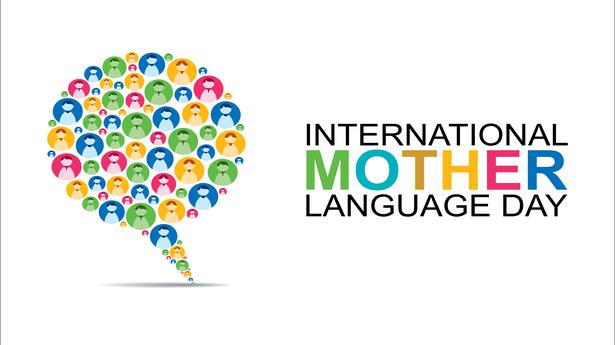Context
-
The theme of International Mother Language Day 2022 — “Using Technology for Multilingual Learning: Challenges and Opportunities” — is one of special relevance to us. The underlying concept is to discuss the role of technology to further the cause of multilingual education.
Technology for multilingual learning
- The central idea is to leverage technology to support and enrich the teaching-learning experience on a multi-lingual level.
- It also aims at achieving a qualitative, equitable and inclusive educational experience.

Source: TH - Inevitably, the widespread use of technology would fast-track development.
- As the Director-General of UNESCO, Audrey Azoulay, observed in her message, “Technology can provide new tools for protecting linguistic diversity. Such tools, for example, facilitating their spread and analysis, allow us to record and preserve languages which sometimes exist only in oral form.”
Multilingual education
- The increasing use of one’s mother tongue is a key component of inclusion in education. To underscore the importance of mother tongue in laying the foundation for one’s intellectual development.
- When applied to Indian classrooms, a multi-lingual approach would also create new pathways of learning by addressing the emerging challenges on a regional and global scale.
- While languages are among the key bridges that ensure cultural and civilisational continuity, globalisation and Westernisation have impacted not just the growth but also the survival of many of our dialects in this rich cultural and linguistic tapestry.
- It would be pertinent to note that the National Education Policy (NEP) 2020 is a visionary document which encourages the use of mother tongue as the medium of instruction till at least Class five but preferably till Class eight and beyond. In drawing up a road map for the future, the NEP seeks to tailor the teaching and learning process and modify it by making it holistic, value-based and inclusive.
Key Challenges
- Globally, the role of technology came to the fore during the COVID-19 pandemic when school shutdowns forced educators and learners to adapt themselves to online education.
- Over weeks and months, this became the new normal across the world, though it did present a host of new challenges.
- These include the requisite skills employed in distance teaching, Internet access, and, importantly, adapting materials and content in diverse languages.
- According to the UN agency, at least 43% of the estimated 6,000 languages spoken in the world are endangered — an alarming figure indeed!
Key Steps taken
- the collaboration between the AICTE and IIT Madras to translate some courses on the central government’s e-learning platform, Study Webs of Active Learning for Young Aspiring Minds (SWAYAM) into eight regional languages such as Tamil, Hindi, Telugu, Kannada, Bengali, Marathi, Malayalam and Gujarati, is commendable.
- the decision of the AICTE to permit B. Tech programmes in 11 native languages, in tune with the NEP, is a historic move which would open the door for students to a wide range of opportunities; the languages are Hindi, Marathi, Tamil, Telugu, Kannada, Gujarati, Malayalam, Bengali, Assamese, Punjabi and Odia.
- Mother Tongue Based Multi-Lingual Education (MTBMLE) introduced in Odisha could play a key role in preserving tribal languages, claim linguistic experts.
- should be endorsed through innovative, cultural and entertainment programmes
Way Forward
- need to create and improve scientific and technical terminology in Indian languages.
- need to build an effective multilingual education system across diverse streams and disciplines becomes all the more imperative.
- It is important to bear in mind that in a survey conducted by the All India Council for Technical Education (AICTE) in 2020 involving over 83,000 students, nearly 44% of students voted in favour of studying engineering in their mother tongue, highlighting a critical need in technical education.
- Need to promote tribal languages as a medium of communication and education in tribal-dominated districts. It can significantly reduce the communication gap and school dropout rate
- It is important to integrate indigenous knowledge systems alongside modern sciences in the curriculum of schools. Tribal languages are fundamental to understand the world we live in, our origin, the roots that we all came from and what humans are capable of
Conclusion
- It would be relevant to recall the words of the renowned physicist, Sir C.V. Raman, who observed with great clarity and vision that “we must teach science in our mother tongue. Otherwise, science will become a highbrow activity. It will not be an activity in which all people can participate.”
Reference:
Visit Abhiyan PEDIA (One of the Most Followed / Recommended) for UPSC Revisions: Click Here
IAS Abhiyan is now on Telegram: Click on the Below link to Join our Channels to stay Updated
IAS Abhiyan Official: Click Here to Join
For UPSC Mains Value Edition (Facts, Quotes, Best Practices, Case Studies): Click Here to Join
